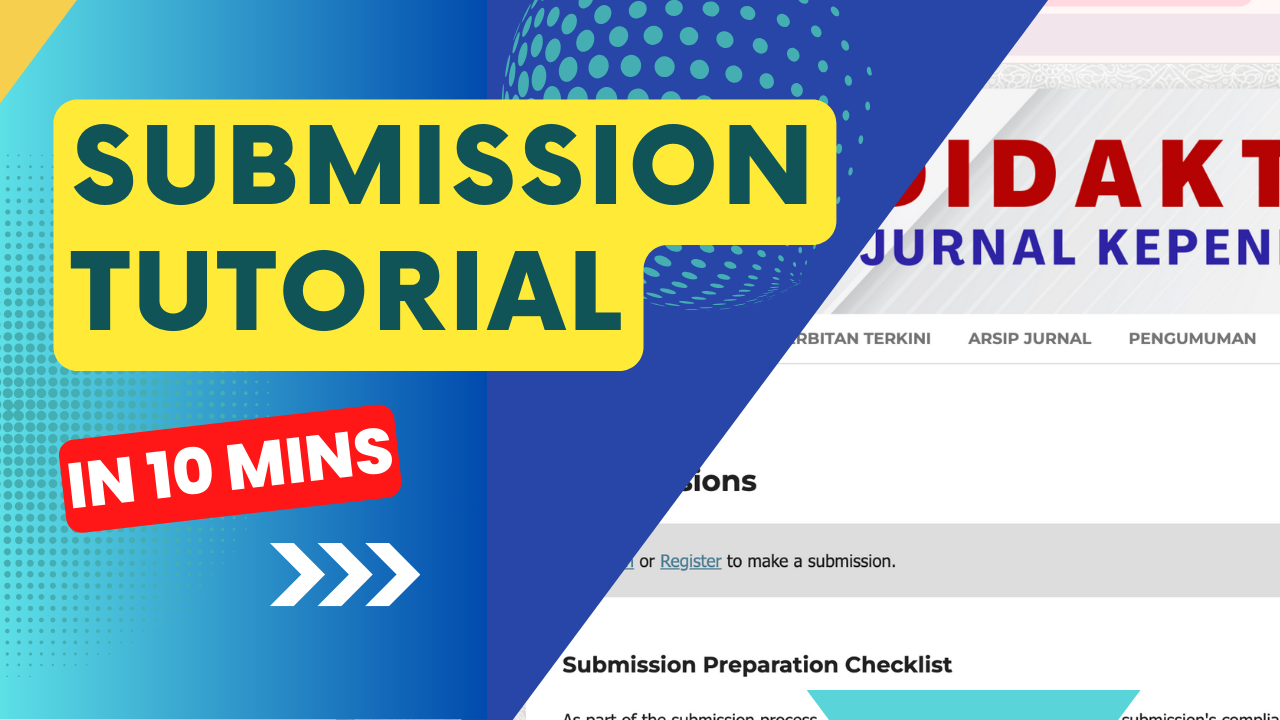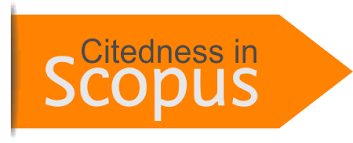The students’ and the Lecturers’ Perspectives towards Online Learning for Translation Course during the Pandemic Covid-19
Abstract
Before the COVID-19 pandemic which broke out in early 2020, most of the classes in many universities in Indonesia were conducted offline (traditional classes). After the outbreak of COVID-19, most institutions had to do online teaching-learning due to government policies to prevent the spread of the coronavirus. Both students and educators realized that online learning was effective for them to fulfill the learning outcomes. In early 2023, many institutions in many countries started to conduct face-to-face classes again due to the decrease of the coronavirus spread. This research aims to find out the perspective of the students in the Translation class in both online and offline classes, before and after the COVID-19 pandemic. The researchers want to find out the solutions that both the students and the lecturers suggest for a better method of conducting a Translation course. This research uses a descriptive qualitative research method. The data are taken from the interview session and the questionnaires. The respondents are the students and lecturers of Translation courses at Universitas Kristen Indonesia and Universitas Gunadarma. This research found that the online teaching and learning process is effective for students and educators.
Metrics
References
Almendingen, K., Morseth, M. S., Gjølstad, E., Brevik, A., & Tørris, C. (2021). Student’s experiences with online teaching following COVID-19 lockdown: A mixed methods explorative study. PloS one, 16(8), e0250378.
Azorín, C. (2020). Beyond COVID-19 supernova. Is another education coming?. Journal of Professional Capital and community, 5(3/4), 381-390.
Baticulon, R. E., Sy, J. J., Alberto, N. R. I., Baron, M. B. C., Mabulay, R. E. C., Rizada, L. G. T., ... & Reyes, J. C. B. (2021). Barriers to online learning in the time of COVID-19: A national survey of medical students in the Philippines. Medical science educator, 31(2), 615-626.
Bower, M., Lee, M. J., & Dalgarno, B. (2017). Collaborative learning across physical and virtual worlds: Factors supporting and constraining learners in a blended reality environment. British Journal of Educational Technology, 48(2), 407–430. https://doi. org/10.1111/bjet.12435.
Darius, P. S. H., Gundabattini, E., & Solomon, D. G. (2021). A survey on the effectiveness of online teaching–learning methods for university and college students. Journal of The Institution of Engineers (India): Series B, 102(6), 1325-1334.
Dutta, A. (2020). Impact of digital social media on Indian higher education: alternative approaches of online learning during COVID-19 pandemic crisis. International journal of scientific and research publications, 10(5), 604-611.
Dziuban, C., Graham, C. R., Moskal, P. D., Norberg, A., & Sicilia, N. (2018). Blended learning: the new normal and emerging technologies. International journal of educational technology in Higher education, 15(1), 1-16.
Gayatri, M. (2020). The implementation of early childhood education in the time of COVID-19 pandemic: A systematic review. Humanities & Social Sciences Reviews, 8(6), 46-54.
González-Sanguino, C., Ausín, B., Castellanos, M. Á., Saiz, J., López-Gómez, A., Ugidos, C., & Muñoz, M. (2020). Mental health consequences during the initial stage of the 2020 Coronavirus pandemic (COVID-19) in Spain. Brain, behavior, and immunity, 87, 172-176
Hakim, A., Nurhikmah, N. H., Halisa, N., Febriati, F., Aras, L., & Lutfi, L. B. (2023). The Effect of Online Learning on Student Learning Outcomes in Indonesian Subjects. Journal of Innovation in Educational and Cultural Research, 4(1), 133-140.
Hall, H., & Davison, B. (2007). Social software as support in hybrid learning environments: The value of the blog as a tool for reflective learning and peer support. Library & information science research, 29(2), 163-187.
Hiltz, S. R., & Turoff, M. (2005). Education goes digital: The evolution of online learning and the revolution in higher education. Communications of the ACM, 48(10), 59-64.
Hiltz, S.R. & Goldman, R. (2005). Learning Together Online: Research on Asynchronous Learning Networks. Eds. Erlbaum, Mahwah, NJ, 2005.)
Hung, D., Tan, S. C., & Chen, D. T. (2003). IT integration and online learning in the Singapore schools. Educational Technology, 43(3), 37-45.
ION Professional eLearning Program. (n.d.). (2023). Strengths and Weaknesses of Online Learning. University of Illinois Springfield. https://www.uis.edu/ion/resources/tutorials/overview/strengths-weaknesses.
Iskandar, A. M. (2022). Peran Orang Tua Dalam Mendampingi Pendidikan Anak di Masa Pandemi Covid-19 (Studi Anak SD Kelas III di SD Inpres 6/86 Botto Padang Kecamatan Kahu Kabupaten Bone). EDULEC: Education, Language, and Culture Journal, 2(1), 13-23. https://doi.org/10.56314/edulec.v2i1.27
Keengwe, J., & Kidd, T. T. (2010). Towards best practices in online learning and teaching in higher education. MERLOT Journal of Online Learning and Teaching, 6(2), 533-541.
Maeroff, G. I. (2003). A classroom of one: How online learning is changing our schools and colleges. New York: Palgrave MacMillan
Matasik, Y., Indrabudiman, M., Salemuddin, M. R., & Iskandar, A. M. (2021). Perilaku Sosial Terhadap Dampak Covid-19 Bagi Masyarakat Karampuang Kota Makassar. EDULEC: Education, Language, and Culture Journal, 1(1), 94-103.
Nae, N. (2020). Online learning during the pandemic: Where does Japan stand? Euromentor Journal, 11(2), 7-24.
Oliver, M., & Trigwell, K. (2005). Can ‘blended learning be redeemed? E-learning and Digital Media, 2(1), 17–26.)
Palloff, R. M., & Pratt, K. (2001). Lessons from cyberspace classroom. San Francisco: JosseyBass
Prasetyanto, D., Rizki, M., & Sunitiyoso, Y. (2022). Online Learning Participation Intention after COVID-19 Pandemic in Indonesia: Do Students Still Make Trips for Online Class? Sustainability, 14(4), 1982.
Tay, L. Y., Lee, S. S., & Ramachandran, K. (2021). Implementation of online home-based learning and students’ engagement during the COVID-19 pandemic: A case study of Singapore mathematics teachers. The Asia-Pacific Education Researcher, 30(3), 299-310.
Watson, J. (2008). Blended Learning: The Convergence of Online and Face-to-Face Education. Promising Practices in Online Learning. North American Council for Online Learning.
Wilde, N., & Hsu, A. (2019). The influence of general self-efficacy on the interpretation of vicarious experience information within online learning. International Journal of Educational Technology in Higher Education, 16(1), 1-20.
Copyright (c) 2024 Gunawan Tambunsaribu, Masda Surti Simatupang

This work is licensed under a Creative Commons Attribution 4.0 International License.
Dengan mengirimkan naskah artikel, berarti penulis setuju dengan segala kebijakan yang ditetapkan oleh jurnal dan penerbit.
Penulis menyatakan bahwa:
- kebijakan ini telah diketahui dan disetujui bersama oleh semua penulis;
- naskah artikel belum dipublikasikan secara resmi sebelumnya di media ber-ISSN atau ber-ISBN yang terdaftar, kecuali dalam bentuk abstrak atau sebagai bagian dari materi kuliah, atau skripsi/tesis/disertasi yang tidak diterbitkan;
- naskah tidak sedang dalam proses editorial dan dipertimbangkan untuk publikasi di tempat lain;
- publikasi naskah ini telah disetujui oleh semua penulis, institusi afiliasi penulis, otoritas yang bertanggung jawab, dan lembaga di mana kegiatan telah dilakukan;
- naskah berisi materi yang aman dari pelanggaran hak cipta;
Perjanjian Hak Cipta dan Lisensi
- Penulis memiliki hak cipta dan hak kepemilikan lainnya yang terkait dengan artikel.
- Penulis memiliki hak dan diizinkan untuk menggunakan substansi artikel untuk karya-karya penulis berikutnya, termasuk untuk keperluan bahan/materi kuliah dan buku.
- Penulis menyerahkan hak publikasi pertama kepada jurnal dengan di bawah Lisensi Creative Commons (CC BY 4.0).
Pernyataan Lisensi CC BY 4.0
Anda diperbolehkan:
- Berbagi — menyalin dan menyebarluaskan kembali materi ini dalam bentuk atau format apapun;
- Adaptasi — menggubah, mengubah, dan membuat turunan dari materi ini untuk kepentingan apapun, termasuk kepentingan komersial.
Pemberi lisensi tidak dapat mencabut ketentuan di atas sepanjang Anda mematuhi ketentuan lisensi berikut ini.
- Atribusi — Anda harus mencantumkan nama yang sesuai, mencantumkan tautan terhadap lisensi, dan menyatakan bahwa telah ada perubahan yang dilakukan. Anda dapat melakukan hal ini dengan cara yang sesuai, namun tidak mengisyaratkan bahwa pemberi lisensi mendukung Anda atau penggunaan Anda.
- Tidak ada pembatasan tambahan — Anda tidak dapat menggunakan ketentuan hukum atau sarana kontrol teknologi yang secara hukum membatasi orang lain untuk melakukan hal-hal yang diizinkan lisensi ini.





.png)








